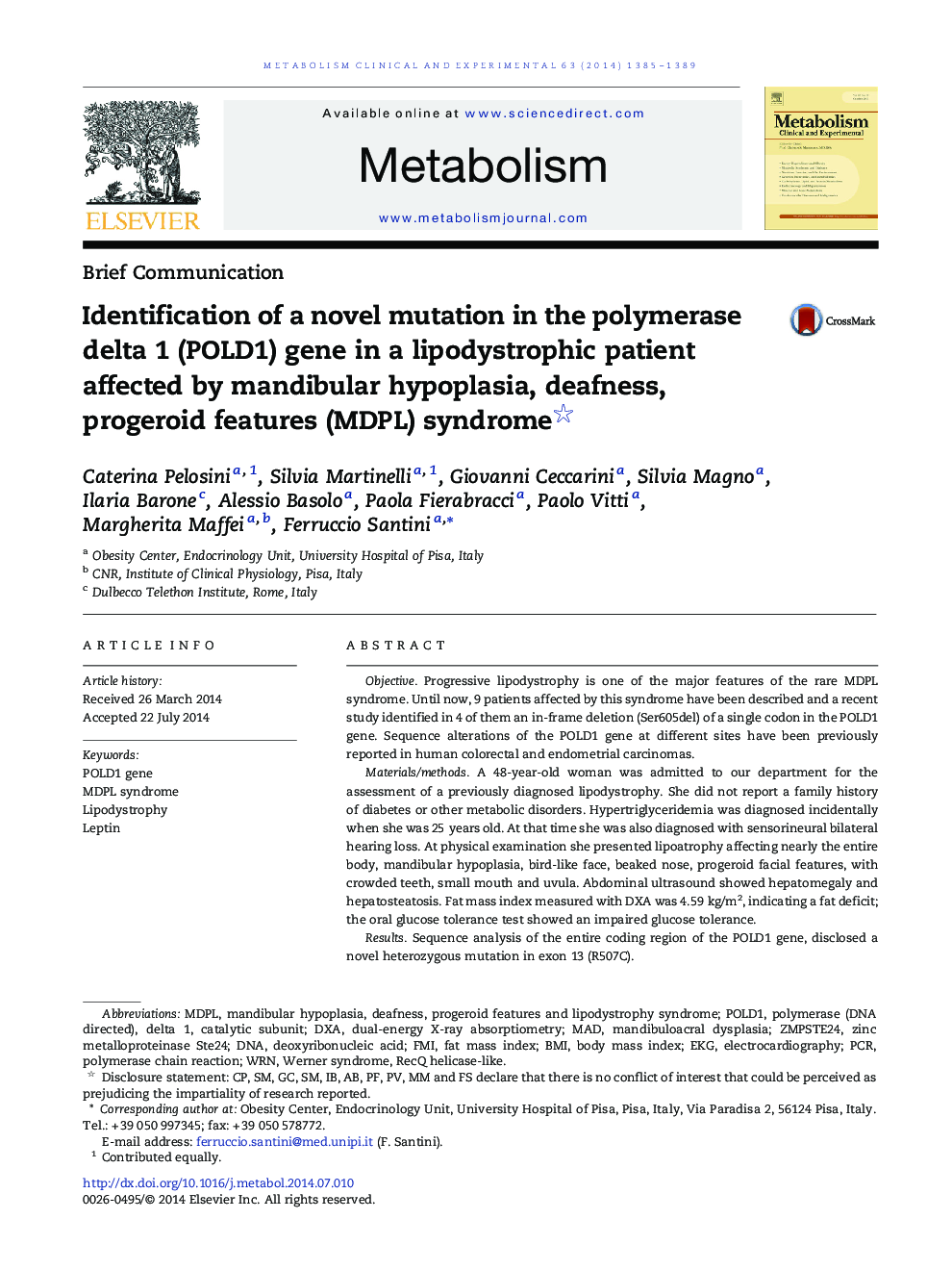| Article ID | Journal | Published Year | Pages | File Type |
|---|---|---|---|---|
| 2805618 | Metabolism | 2014 | 5 Pages |
ObjectiveProgressive lipodystrophy is one of the major features of the rare MDPL syndrome. Until now, 9 patients affected by this syndrome have been described and a recent study identified in 4 of them an in-frame deletion (Ser605del) of a single codon in the POLD1 gene. Sequence alterations of the POLD1 gene at different sites have been previously reported in human colorectal and endometrial carcinomas.Materials/methodsA 48-year-old woman was admitted to our department for the assessment of a previously diagnosed lipodystrophy. She did not report a family history of diabetes or other metabolic disorders. Hypertriglyceridemia was diagnosed incidentally when she was 25 years old. At that time she was also diagnosed with sensorineural bilateral hearing loss. At physical examination she presented lipoatrophy affecting nearly the entire body, mandibular hypoplasia, bird-like face, beaked nose, progeroid facial features, with crowded teeth, small mouth and uvula. Abdominal ultrasound showed hepatomegaly and hepatosteatosis. Fat mass index measured with DXA was 4.59 kg/m2, indicating a fat deficit; the oral glucose tolerance test showed an impaired glucose tolerance.ResultsSequence analysis of the entire coding region of the POLD1 gene, disclosed a novel heterozygous mutation in exon 13 (R507C).ConclusionThe MDPL patient herein described harbors a novel mutation in the exonuclease domain of POLD1. This new variant provides further evidence for a role of POLD1 in the pathogenesis of MDPL. The mechanisms that link changes at various sites of the protein with different diseases remain to be clarified.
